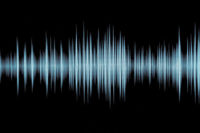Third-Party Sound Laboratory Test
This Article Outlines the Differences Between Third Party Sound Laboratory Testing and As-Built Wall Assemblies.



Wall assembly sound testing in a 3rd party laboratory.

Wall assembly sound testing in a 3rd party laboratory.






When laboratory third party sound testing first came on line, it was the drywall manufacturers who were quick to get their drywall tested. In doing so, they set the testing precedence of how wall assemblies were tested. Early testing focused on the drywall above all other parameters. Perimeter joints, adjoining connection points, different types of ceilings, or steel I-beams were never really considered, as the emphases was placed entirely on the wall itself.
Testing this way is still important for drywall manufacturers. This way you can compare one brand of drywall versus another. Focusing on the drywall is not necessarily a bad thing when you are trying to determine the STC value. However, it is important to note as-built wall assemblies are far different than what is sound tested in a laboratory.
What are the differences?
Screw Fasteners:
In a third party sound test, it is common for framing screws (that attach the stud to the track) to not be utilized in the test as the studs are simply nested into the top and bottom track. The reason for this is to reduce the rigidity of the wall assembly. Reducing the rigidity can aid in a higher STC value. In an as-built wall assembly, framing screws are required in the bottom track and in the center of the slot on a slotted track to maintain a positive stud to track attachment with dynamic movement.
The spacing of the drywall fasteners should be listed on the third party sound report. Many third party sound reports will have the spacing range from 8 inches on center to 24 inches on center. There is a consensus that the further the drywall fasteners are spaced apart the higher the STC values. If the wall is fire rated, the builder will need to space the drywall fasteners per the UL report which may mean the drywall fasteners will need to be closer than what was tested in the sound report.
In an as-built wall assembly with dynamic movement (which is any wall assembly used in a post tension slab or fluted deck construction), the drywall cannot be screwed into the top track as doing so would prevent movement. Many third party sound tests will attach the drywall to the top track assist with a tight seal against the framing member.
Framing Members:
In a third party sound test it is common to use the same 18 mil, 25 gauge 1 1/4-inch leg track for the bottom and top of wall. The reason for this is to use the same steel mil thickness and gauge for the steel studs and track. Using the 18 mil steel will result in higher STC values than those with heavier mil thicknesses. However, if the wall assembly is fire rated the builder will be required to use a heavier mil thickness steel top track with a longer leg for dynamic movement.
Perimeter Seal:
When drywall manufacturers sound test their drywall they are not going to risk any breach at the perimeter seal and over the years the third party testing perimeter seal has become very robust. Third party sound testing labs will use putty tape and/or freshly applied wet acoustic sealant, neither of which are fire rated. Testing acoustic sealant while it’s still wet and very flexible will optimize STC performance. However, in the as-built wall assembly the acoustic sealant will harden and shrink over time which will ultimately affect the flexibility of the sealant and STC performance.
Foam Pads:
Foam pads are placed between the test opening and perimeter studs of track studs to reduce rigidity to improve the STC. Unfortunately, it is not built in the field with these foam isolation pads. Is there any other way to mimic these isolation pads? Yes. A simple internet search will show different options. Understanding the options can be tricky if you do not know what you are looking for. What to look for:
- If you have a fire rated wall the product will also need to provide a fire rating as there are some products that only provide sound ratings.
- Will the product remain flexible for the life of the assembly or is it something that will get ridged or brittle over time?
- Does the product have the proper third party testing for both STC and fire ratings?
An example of a product that will provide both 1-and 2-hour fire ratings per UL-2079, will remain flexible for the life of the assembly, and has several third party sound tested per ASTM E90 is HOTROD XL.
Many Sound Consultants are brilliant acousticians but unfortunately many of them do not understand the as-built requirements established by the structural engineer. The structural engineer will calculate the loading of the structure which will determine the mil thickness and spacing of the steel studs and will also calculate the deflection requirement between the wall and the ceiling.
The deflection requirement is one area that is often over looked. If the structure is designed to move 1/2 inch up and down (1 inch total) the perimeter joint protection must provide sound and often fire protection for that 1 inch of movement. If it is a fire rated wall a builder can find third party fire reports that has testing for this type of movement. However, there are no third party sound tested walls with dynamic movement. Since there is no movement testing for sound walls, builders may be forced to use third party fire tested assemblies (example: UL HW-D-0624 reports per UL-2079 that have been tested for movement).
Unfortunately, for manufacturers just because their building joint product or material was fire tested it does not automatically give it an STC rating. For this reason, firestopping products may need to provide third party testing for both fire and sound ratings to be used in today commercial construction.
What to do to avoid the pitfalls identified in this article?
Make sure that the as-built wall assembly matches the third party sound report that is approved or submitted by the architect or contractor. There are newer third party sound reports that focus on the steel stud framing, stud spacing, and perimeter joint protection.
If the project requires permanently flexible joint protection, make sure that it is. Acoustic sealant will shrink back and harden over time. With a little online research, you can find an array flexible fire rated drywall accessory that will never harden or shrink for the life of the wall assembly.
Most commercial buildings and or high-rise buildings will require fire rated wall assemblies with dynamic movement. Most “acoustic sealants” will not provide dynamic movement or fire ratings. If the sound consultant is going to insist on having acoustic sealant installed, as a builder you may have to inform sound consultant of the acoustic sealant deficiencies with fire ratings or movement requirements.
Having documented third party reports through an accredited sound laboratory per ASTM E-90 and accredited fire lab that can test per ASTM E119 will provide an assembly guideline for both the builder and the inspector. This takes away the guess work, removes assumptions and provides the quality assurances needed in today’s construction.
Looking for a reprint of this article?
From high-res PDFs to custom plaques, order your copy today!













